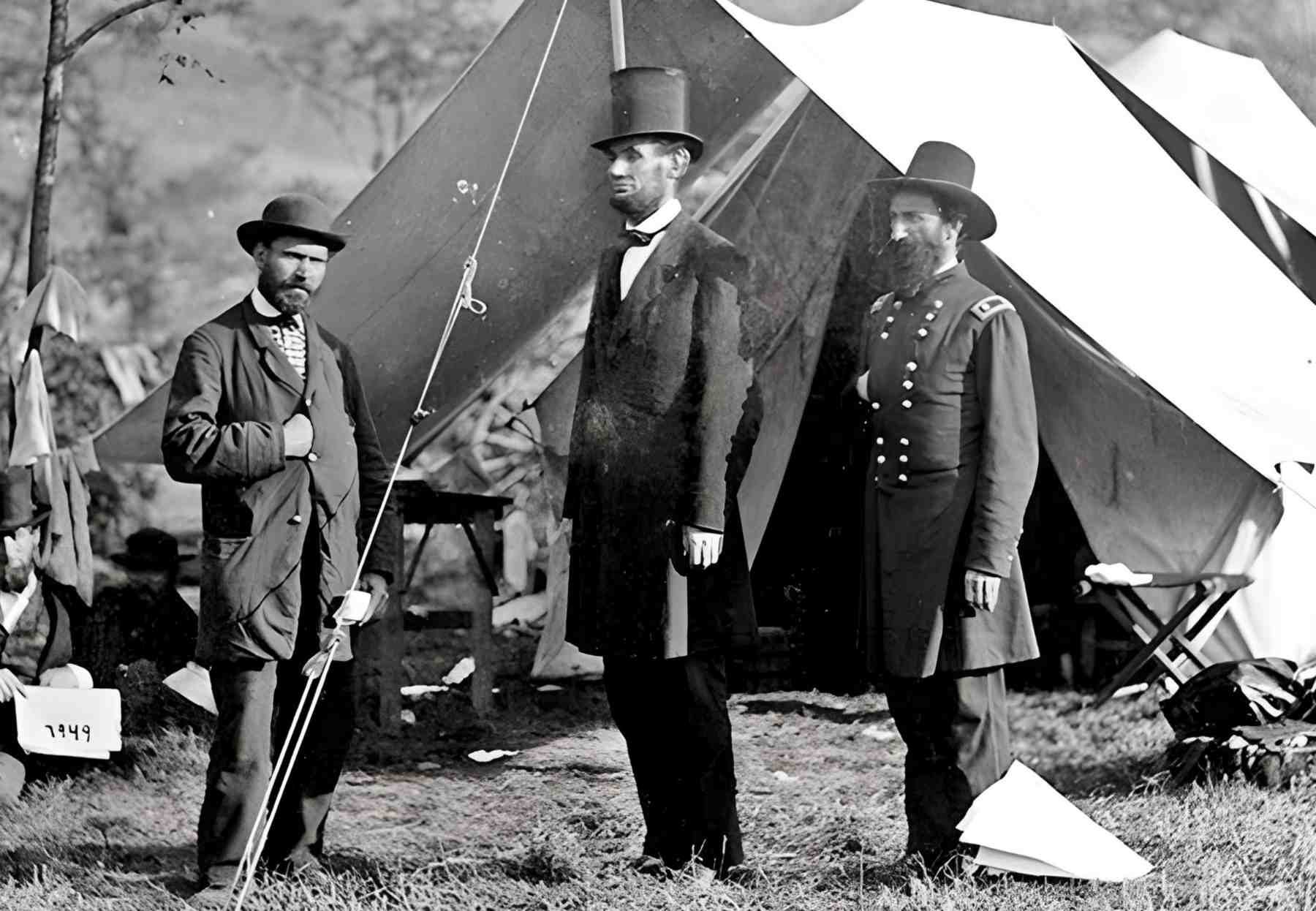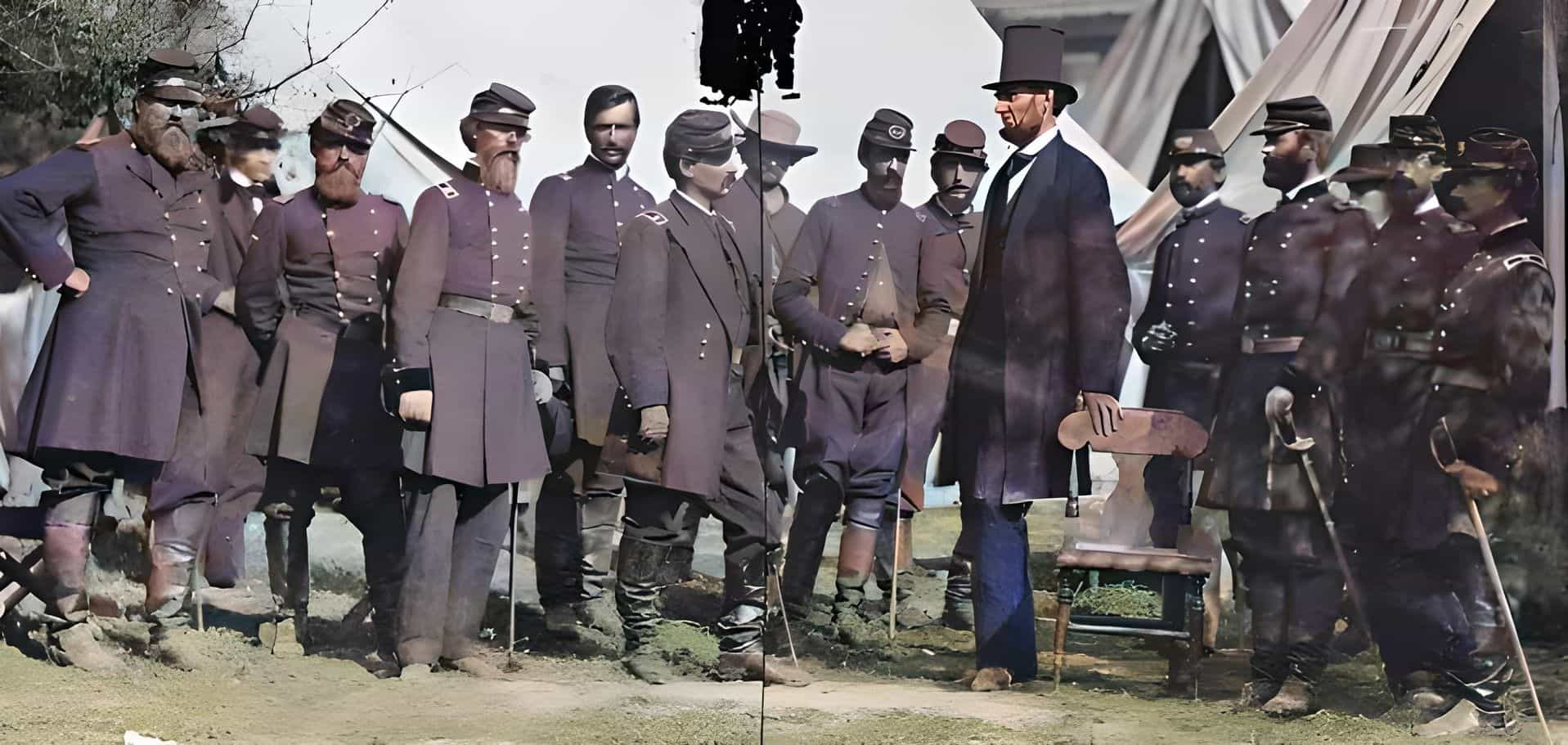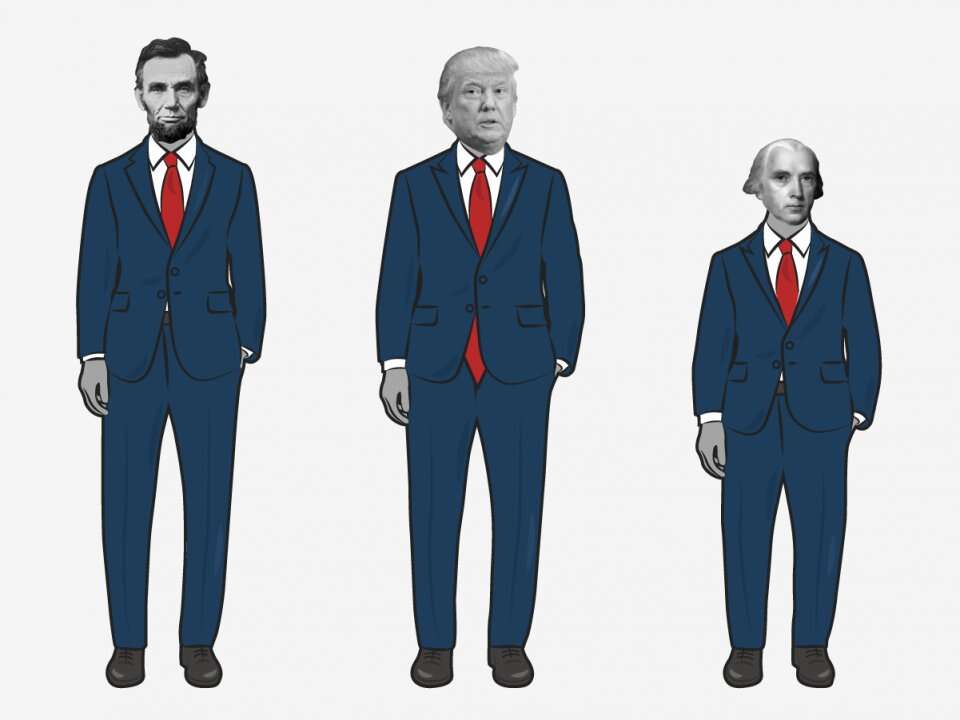How tall was Abraham Lincoln? Abraham Lincoln, the 16th president of the United States, stood 6 feet 4 inches (193 cm) tall.
Lincoln's height was considered above average for his time. The average height for men in the United States in the mid-19th century was about 5 feet 8 inches (173 cm). Lincoln's height gave him a commanding presence, and he was often described as being "tall and lanky."
Lincoln's height may have been an advantage in his political career. He was able to stand out in a crowd, and his height may have made him seem more authoritative. Lincoln's height also made him a good target for caricaturists, who often depicted him as being very tall and thin.
Abraham Lincoln's Height in Feet
Introduction
Abraham Lincoln was the 16th President of the United States. He is considered one of the greatest presidents in American history. Lincoln was a tall man, standing 6 feet 4 inches tall. His height was a source of both admiration and ridicule.
Key Aspects
- Lincoln's height was above average for his time. The average height for men in the United States in the mid-19th century was about 5 feet 8 inches. Lincoln's height gave him a commanding presence, and he was often described as being "tall and lanky."
- Lincoln's height may have been an advantage in his political career. He was able to stand out in a crowd, and his height may have made him seem more authoritative. Lincoln's height also made him a good target for caricaturists, who often depicted him as being very tall and thin.
Discussion
Lincoln's height was a source of both admiration and ridicule. Some people admired Lincoln's height, seeing it as a sign of strength and leadership. Others ridiculed Lincoln's height, calling him "lanky" and "ungainly." Despite the ridicule, Lincoln never let his height bother him. He was confident in his abilities, and he used his height to his advantage.
Lincoln's Height and His Presidency
Lincoln's height may have played a role in his success as president. He was able to use his height to his advantage, both in terms of physical presence and in terms of symbolism. Lincoln's height gave him a commanding presence, and he was able to use this to his advantage in negotiations and speeches. Additionally, Lincoln's height was a symbol of strength and leadership, which may have helped to inspire the American people during the Civil War.
Conclusion
Abraham Lincoln's height was a significant part of his life and presidency. It was a source of both admiration and ridicule, but Lincoln never let it bother him. He used his height to his advantage, both in terms of physical presence and in terms of symbolism. Lincoln's height was a reminder that he was a strong and capable leader, and it helped to inspire the American people during the Civil War.
| Attribute | Value |
|---|---|
| Height | 6 feet 4 inches (193 cm) |
| Average height for men in the mid-19th century | 5 feet 8 inches (173 cm) |
Abraham Lincoln's Height
Abraham Lincoln, the 16th President of the United States, was known for his towering height. Standing at 6 feet 4 inches (193 cm), Lincoln was considered tall for his time. His height was a defining physical characteristic that shaped his public image and contributed to his legacy.
- Physical Presence: Lincoln's height gave him a commanding presence, making him stand out in a crowd.
- Symbol of Strength: His height was seen as a symbol of strength and authority, inspiring confidence in his leadership.
- Target of Caricature: Lincoln's height also made him a target for caricaturists, who often exaggerated his stature for comedic effect.
- Advantage in Politics: His height may have been an asset in his political career, giving him an edge in public speaking and debates.
- Medical Implications: Lincoln's height may have contributed to his health issues, such as Marfan syndrome, which can affect tall individuals.
- Historical Context: Lincoln's height was notable in the 19th century when the average height for men was shorter than today.
- Legacy: Lincoln's height remains a defining characteristic associated with his presidency and is often mentioned in historical accounts and popular culture.
In conclusion, Abraham Lincoln's height was a multifaceted aspect of his life and presidency. It shaped his physical presence, influenced his public image, and became a part of his legacy. Lincoln's height was not just a physical attribute but also a symbol of his strength, authority, and the historical context of his time.
| Attribute | Value |
|---|---|
| Full Name | Abraham Lincoln |
| Date of Birth | February 12, 1809 |
| Place of Birth | Hodgenville, Kentucky, U.S. |
| Date of Death | April 15, 1865 |
| Place of Death | Washington, D.C., U.S. |
| Height | 6 feet 4 inches (193 cm) |
| Political Party | Republican |
| Occupation | Lawyer, Politician |
| Spouse | Mary Todd Lincoln |
| Children | Robert Todd Lincoln, Edward Baker Lincoln, William Wallace Lincoln, Thomas "Tad" Lincoln |
Physical Presence
Abraham Lincoln's height was a significant factor in his physical presence. Standing at 6 feet 4 inches (193 cm), he towered over many of his contemporaries. This height gave him a commanding presence, making him stand out in any crowd. Lincoln's height was an asset in his political career, as it helped him to project an image of strength and authority.
In addition to his height, Lincoln's physical presence was also enhanced by his lanky frame and his deep-set eyes. These features gave him a striking and memorable appearance. Lincoln's height and physical presence were important factors in his success as a politician and leader.
Here are some examples of how Lincoln's height and physical presence influenced his career:
- In the 1858 Lincoln-Douglas debates, Lincoln's height and physical presence gave him an advantage over his opponent, Stephen Douglas. Lincoln was able to use his height to intimidate Douglas and to make himself appear more authoritative.
- When Lincoln delivered the Gettysburg Address in 1863, his height and physical presence helped him to command the attention of the crowd. Lincoln's speech was a powerful and moving call for unity, and his height and physical presence helped to ensure that his message was heard.
Lincoln's height and physical presence were important factors in his success as a politician and leader. His height gave him a commanding presence, and his lanky frame and deep-set eyes gave him a striking and memorable appearance. These physical attributes helped Lincoln to project an image of strength and authority, which was essential to his success.
Symbol of Strength
Abraham Lincoln's height was not just a physical attribute but also a symbol of his strength and authority. In the 19th century, height was often associated with power and leadership, and Lincoln's towering stature gave him an aura of authority that inspired confidence in his followers.
There are several reasons why Lincoln's height may have been seen as a symbol of strength. First, height is often associated with physical strength and dominance. In a time when physical strength was more important for survival and success, Lincoln's height may have been seen as a sign that he was a capable and powerful leader.
Second, height can also be seen as a symbol of moral authority. In many cultures, tall people are seen as being more wise and experienced, and they are often given positions of leadership and respect. Lincoln's height may have helped him to project an image of wisdom and authority, which would have been essential for leading a nation through a time of crisis.
There are many examples of how Lincoln's height inspired confidence in his leadership. For example, when Lincoln delivered the Gettysburg Address in 1863, his height and commanding presence helped him to deliver a powerful and moving speech that rallied the nation behind the Union cause.
Lincoln's height was an important factor in his success as a leader. It gave him a commanding presence, and it helped him to project an image of strength and authority. This inspired confidence in his followers and helped him to unite the nation during a time of crisis.
Target of Caricature
Abraham Lincoln's height was a defining physical characteristic that often became the subject of caricature and satire. Caricaturists exaggerated his height for comedic effect, creating images that emphasized his lanky frame and towering stature.
This tendency to caricature Lincoln's height stems from the cultural and social significance of height in the 19th century. Height was often associated with power, authority, and masculinity. Lincoln's height, therefore, became a visual shorthand for his leadership and influence.
However, caricatures of Lincoln's height also reflected the political and social tensions of the time. Opponents and critics used exaggerated depictions of Lincoln's height to mock his appearance and undermine his authority. These caricatures often portrayed him as ungainly, awkward, or even comical.
Despite the satirical intent, caricatures of Lincoln's height also reveal a fascination with his physical presence. They highlight the public's interest in Lincoln's appearance and the ways in which his height shaped his public image.
In conclusion, the caricatures of Lincoln's height provide insight into the cultural and political landscape of the 19th century. They reflect the significance of height as a symbol of power and authority, as well as the ways in which Lincoln's physical characteristics were used to shape his public image.
Advantage in Politics
Abraham Lincoln's height was a significant advantage in his political career, particularly in public speaking and debates. His towering stature commanded attention and gave him a commanding presence. Lincoln's height allowed him to project his voice more effectively, ensuring that his words reached the entire audience. Moreover, his height may have intimidated his opponents and made him appear more authoritative.
One notable example of Lincoln's height being an advantage in a debate was his famous series of debates with Stephen Douglas in 1858. Lincoln's height and physical presence gave him an edge in these debates, as he was able to appear more authoritative and commanding than Douglas. Lincoln's height also helped him to project his voice more effectively, ensuring that his arguments were heard by the entire audience.
In conclusion, Lincoln's height was a significant advantage in his political career, particularly in public speaking and debates. His height gave him a commanding presence, allowed him to project his voice more effectively, and may have intimidated his opponents. These advantages helped Lincoln to become one of the most successful and influential presidents in American history.
Medical Implications
Abraham Lincoln's height may have had medical implications, contributing to health issues he experienced throughout his life. One potential condition associated with tall individuals is Marfan syndrome, a genetic disorder that affects connective tissues in the body.
Marfan syndrome can cause a range of symptoms, including excessive height, long and slender limbs, and cardiovascular problems. While there is no definitive evidence linking Lincoln's height to Marfan syndrome, some historians and medical experts have speculated that he may have had a mild form of the condition.
If Lincoln did have Marfan syndrome, it could have contributed to some of the health issues he faced. For instance, Lincoln suffered from chronic headaches, which may have been related to the cardiovascular complications associated with Marfan syndrome. Additionally, Lincoln's height may have put him at an increased risk of aortic dissection, a life-threatening condition involving a tear in the aorta, the body's main artery.
While the exact cause of Lincoln's death remains a subject of debate, some historians believe that an aortic dissection may have been a contributing factor. It is important to note that these speculations are based on limited medical evidence and do not provide a definitive diagnosis.
Nevertheless, the potential connection between Lincoln's height and his health highlights the importance of understanding the medical implications associated with excessive height. Marfan syndrome and other conditions that affect tall individuals require careful monitoring and management to ensure optimal health and well-being.
Historical Context
Abraham Lincoln's height was particularly notable in the 19th century due to the fact that the average height for men was significantly shorter than it is today. This difference in average height can be attributed to a combination of factors, including nutrition, healthcare, and genetics.
- Nutritional Factors: In the 19th century, access to a nutritious diet was limited for many people, especially in rural areas. Poor nutrition can stunt growth and lead to shorter stature.
- Healthcare: The 19th century was a time of limited medical knowledge and technology. Common diseases that are now easily treatable could be fatal or debilitating, and childhood illnesses often resulted in stunted growth.
- Genetics: While nutrition and healthcare play a significant role in determining height, genetics also contribute to an individual's height. The average height of a population is influenced by the genetic makeup of that population.
Lincoln's height was likely influenced by a combination of these factors. He was born into a poor family and grew up in a rural area, which may have limited his access to a nutritious diet and adequate healthcare. Additionally, Lincoln's family history may have contributed to his height, as some of his relatives were also tall.
Lincoln's height was a notable characteristic that set him apart from his contemporaries. It gave him a commanding presence and may have contributed to his success in politics. However, it is important to remember that Lincoln's height was not solely due to genetics but was also influenced by the historical context in which he lived.
Legacy
Abraham Lincoln's height was a significant factor in shaping his legacy. His towering stature made him a physically imposing figure, and it contributed to his image as a strong and capable leader. Lincoln's height was also a source of fascination for the public, and it has been the subject of much discussion and speculation over the years.
One of the most important ways in which Lincoln's height has shaped his legacy is through its representation in historical accounts. Many paintings, sculptures, and photographs of Lincoln depict him as a tall and imposing figure. This imagery has helped to create a lasting impression of Lincoln as a larger-than-life figure.
In addition to historical accounts, Lincoln's height has also been a popular topic in popular culture. He has been portrayed by numerous actors in films and television shows, and his height is often mentioned in these portrayals. This exposure in popular culture has helped to ensure that Lincoln's height remains a defining characteristic associated with his presidency.
The connection between Lincoln's height and his legacy is significant because it highlights the importance of physical appearance in shaping public perception. Lincoln's height was a key part of his image as a strong and capable leader, and it continues to be an important part of his legacy today.
FAQs about Abraham Lincoln's Height
Abraham Lincoln's height was a notable physical characteristic, and it has been the subject of much discussion and speculation over the years. Here are answers to some frequently asked questions about Lincoln's height:
Question 1: How tall was Abraham Lincoln?
Answer: Abraham Lincoln stood 6 feet 4 inches (193 cm) tall.
Question 2: Was Lincoln's height an advantage or a disadvantage in his presidency?
Answer: Lincoln's height was likely both an advantage and a disadvantage in his presidency. On the one hand, his height gave him a commanding presence and made him appear more authoritative. On the other hand, his height may have also made him a target for ridicule and criticism.
Summary: Abraham Lincoln's height was a significant physical characteristic that shaped his public image and legacy. While his height may have given him certain advantages, it may have also presented certain challenges. Ultimately, Lincoln's height was just one of many factors that contributed to his success as a president.
Conclusion
Abraham Lincoln's height was a defining physical characteristic that shaped his public image and legacy. His towering stature gave him a commanding presence and made him appear more authoritative. Lincoln's height was also a source of fascination for the public, and it has been the subject of much discussion and speculation over the years.
Lincoln's height was likely both an advantage and a disadvantage in his presidency. On the one hand, his height gave him a commanding presence and made him appear more authoritative. On the other hand, his height may have also made him a target for ridicule and criticism.
Ultimately, Lincoln's height was just one of many factors that contributed to his success as a president. His height may have given him certain advantages, but it also presented certain challenges. However, Lincoln's height remains a defining characteristic associated with his presidency, and it is an important part of his legacy.
Article Recommendations



ncG1vNJzZmiclaK8b7HNnqmgoaOirrPAjaemaKqVobKiv8SsaWiZkqeuqa3MZqOippOkua95x56goKCkYravecWenK1mmKm6rQ%3D%3D